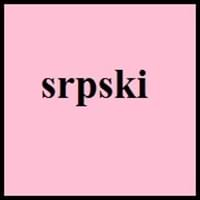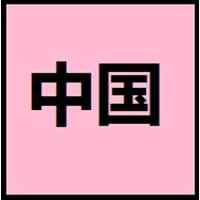Countries
Bosnia and Herzegovina, Kosovo, Serbia, Slovakia
China, Hong Kong, Macau, Singapore, Taiwan
National Language
Bosnia, Croatia, Montenegro, Serbia
China, Taiwan
Second Language
Not spoken in any of the countries
Republic of Brazil
Speaking Continents
Europe
Asia
Minority Language
Croatia, Czech Republic, Hungary, Macedonia, Montenegro, Romania, Slovakia
Indonesia, Malaysia
Regulated By
Board for Standardization of the Serbian Language
Chinese Language Standardization Council, National Commission on Language and Script Work, Promote Mandarin Council
Interesting Facts
- Serbian language was derived from the Old Church Salvic, as the language was commonly spoken by most of Slavic people in the 9th Century.
- Serbian language is based on Stokavian dialect.
- Chinese language is tonal, since meaning of a word changes according to its tone.
- In Chinese language, there is no grammatical distinction between singular or plural, no declination of verbs according to tense, mood and aspect.
Similar To
Bosnian and Croatian Languages
Not Available
Derived From
Not Available
Not Available
Alphabets in
Serbian-Alphabets.jpg#200
Chinese.jpg#200
Scripts
Cyrillic, Latin
Chinese Characters and derivatives
Writing Direction
Left-To-Right, Horizontal
Left-To-Right, Horizontal, Top-To-Bottom
Hello
Здраво (Zdravo)
您好 (Nín hǎo)
Thank You
Хвала лепо (Hvala lepo)
谢谢 (Xièxiè)
How Are You?
Како си? (Kako si?)
你好吗? (Nǐ hǎo ma?)
Good Night
Лаку ноћ (Laku noć)
晚安 (Wǎn'ān)
Good Evening
Добро вече (Dobro veče)
晚上好 (Wǎnshàng hǎo)
Good Afternoon
Добар дан (Dobar dan)
下午好 (Xiàwǔ hǎo)
Good Morning
Добро јутро (Dobro jutro)
早安 (Zǎo ān)
Please
Молим (Molim)
请 (Qǐng)
Sorry
Жао ми је (Žao mi je)
遗憾 (Yíhàn)
Bye
Довиђења (Doviđenja)
再见 (Zàijiàn)
I Love You
Волим те (Volim te)
我爱你 (Wǒ ài nǐ)
Excuse Me
Извините (Izvinite)
劳驾 (Láojià)
Dialect 1
Prizren-Timok
Mandarin
Where They Speak
Southeastern Serbia
China, Malaysia, Singapore, Taiwan
How Many People Speak
Not Available
Dialect 2
Smederevo–Vršac
Wu
Where They Speak
Serbia
China, United States of America
How Many People Speak
Not Available
Where They Speak
Bulgaria, France, Kosovo, Macedonia, Romania, Serbia
China, Malaysia, Singapore, Vietnam
Speaking Population
Not Available
Second Language Speakers
Not Available
Native Name
српски (srpski) српски језик (srpski jezik)
中文 (zhōngwén)
Alternative Names
Montenegrin
Not Available
French Name
serbe
chinois
German Name
Serbisch
Chinesisch
Pronunciation
[sr̩̂pskiː]
Not Available
Origin
11th Century
1250 BC
Language Family
Indo-European Family
Sino-Tibetan Family
Subgroup
Not Available
Not Available
Branch
Not Available
Not Available
Early Forms
No early forms
No early forms
Standard Forms
Standard Serbian
Standard Chinese
Signed Forms
Not Available
Wenfa Shouyu 文法手語 ("Grammatical Sign Language", Signed Mandarin (Taiwan))
Scope
Individual
Individual
ISO 639 6
Not Available
Not Available
Glottocode
serb1264
sini1245
Linguasphere
53-AAA-g
79-AAA
Language Type
Living
Living
Language Linguistic Typology
Subject-Verb-Object
Subject-Verb-Object
Language Morphological Typology
Not Available
Analytic, Isolating
All Serbian and Chinese Dialects
Most languages have dialects where each dialect differ from other dialect with respect to grammar and vocabulary. Here you will get to know all Serbian and Chinese dialects. Various dialects of Serbian and Chinese language differ in their pronunciations and words. Dialects of Serbian are spoken in different Serbian Speaking Countries whereas Chinese Dialects are spoken in different Chinese speaking countries. Also the number of people speaking Serbian vs Chinese Dialects varies from few thousands to many millions. Some of the Serbian dialects include: Prizren-Timok, Smederevo–Vršac. Chinese dialects include: Mandarin , Wu. Also learn about dialects in South American Languages and North American Languages.
Serbian and Chinese Speaking population
Serbian and Chinese speaking population is one of the factors based on which Serbian and Chinese languages can be compared. The total count of Serbian and Chinese Speaking population in percentage is also given. The percentage of people speaking Serbian language is Not Available whereas the percentage of people speaking Chinese language is 16.00 %. When we compare the speaking population of any two languages we get to know which of two languages is more popular. Find more details about how many people speak Serbian and Chinese on Serbian vs Chinese where you will get native speakers, speaking population in percentage and native names.
Serbian and Chinese Language Codes
Serbian and Chinese language codes are used in those applications where using language names are tedious. Serbian and Chinese Language Codes include all the international language codes, glottocodes and linguasphere.





